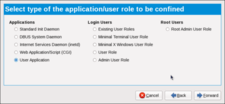SELinux Sandbox for Untrusted Programs
The security framework SELinux is set to offer a Sandbox in which applications deemed insecure can be partitioned off from other system areas.
Red Hat colleagues Dan Walsh and Eric Paris have designed an additional security tool. SELinux project leader Walsh describes the functionality and development of this tool in a detailed blog entry. The main idea: for SELinux to limit the actions an application can perform and to confine untrusted binaries. This way, users should be able to work with programs and data that are not considered 100% secure.
The developers were inspired to create a sandbox to execute these security measures using the SELinux policies via a query on the Linux core list. Walsh describes: "The bug report talked about confining grep, awk, ls ... The idea was couldn't we stop the grep or the mv command from suddenly opening up a network connection and copying off my /etc/shadow file to parts unknown.“ Regarding further application areas, Walsh sees GRID jobs as potential danger, they might become Spam Bots or attack systems in some other form.

According to Walsh, only 10 clicks were needed to write the policy with the GUI program from Fedora 11. He delivers interested parties precise instructions. In addition to the policy, the “usr/bin/sandbox” tool was written in order to route contents into the Sandbox. One issue with the current version has not yet been fully dealt with: “My current intention with sandbox is not to handle X Apps, since these apps want to write all over the home directory ~/.gconf, ~/gnome., ~/.config ... and all over /tmp, along with use privs to talk to the X Server. I have some ideas on this for the future that I hope to experiment with.”
In a message on the Linux kernel list, Eric Paris introduces a simple application example and invites users to share their experiences. “Check it out, SELinux confinement made easy."